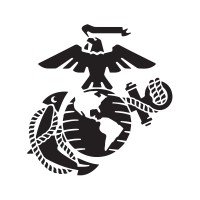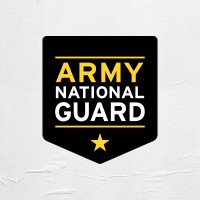Company Details
united-states-army-reserve
25,424
93,453
92811
http://www.usar.army.mil/
0
UNI_7312289
In-progress

United States Army Reserve Company CyberSecurity Posture
http://www.usar.army.mil/The U.S. Army Reserve's mission, under Title 10 of the U.S. code, is to provide trained and ready Soldiers and units with the critical combat service support and combat support capabilities necessary to support nation strategy during peacetime, contingencies and war. The Army Reserve is a key element in The Army multi-component unit force, training with Active and National Guard units to ensure all three components work as a fully integrated team. If you're looking for news about the U.S. Army Reserve, visit https://www.usar.army.mil/ For information about U.S. Army Reserve career opportunities visit https://www.goarmy.com/reserve.html
Company Details
united-states-army-reserve
25,424
93,453
92811
http://www.usar.army.mil/
0
UNI_7312289
In-progress
Between 750 and 799

 USAR Global Score (TPRM)
USAR Global Score (TPRM)XXXX

Description: The FBI and Department of Defense (DoD) revealed that **Salt Typhoon**, a Chinese state-sponsored hacker group linked to the Ministry of State Security and People’s Liberation Army, conducted a **long-term cyber-espionage campaign** against a US state National Guard network. The group **breached the network and remained undetected for nearly a year**, exfiltrating **sensitive military and law enforcement data**. The attack involved **compromising backbone routers and networking equipment** via known vulnerabilities, altering access controls, creating privileged accounts, and enabling remote management for **persistent, long-term access**. The primary objective was **surveillance and intelligence gathering** rather than financial gain, targeting **telecom carriers, government organizations, military infrastructure, and healthcare sectors**. The scale of the campaign was **far broader than initially assessed**, with at least **60 organizations across 80 countries** affected. The FBI warned that the indiscriminate targeting of private communications poses a **severe threat to national security**, urging immediate collaboration with global partners to counter the activity. The DoD confirmed the group’s ability to **move laterally across networks**, leveraging trusted connections to pivot into other systems, further amplifying the risk of **data exfiltration and operational disruption** in critical infrastructure.


United States Army Reserve has 16.28% more incidents than the average of same-industry companies with at least one recorded incident.
United States Army Reserve has 56.25% more incidents than the average of all companies with at least one recorded incident.
United States Army Reserve reported 1 incidents this year: 1 cyber attacks, 0 ransomware, 0 vulnerabilities, 0 data breaches, compared to industry peers with at least 1 incident.
USAR cyber incidents detection timeline including parent company and subsidiaries

The U.S. Army Reserve's mission, under Title 10 of the U.S. code, is to provide trained and ready Soldiers and units with the critical combat service support and combat support capabilities necessary to support nation strategy during peacetime, contingencies and war. The Army Reserve is a key element in The Army multi-component unit force, training with Active and National Guard units to ensure all three components work as a fully integrated team. If you're looking for news about the U.S. Army Reserve, visit https://www.usar.army.mil/ For information about U.S. Army Reserve career opportunities visit https://www.goarmy.com/reserve.html


The Swedish Armed Forces is one of the biggest authorities in Sweden and is headed by a Supreme Commander. The deputy leader of the authority is the Director General. As the only authority permitted to engage in armed combat, the Swedish Armed Forces are Sweden’s ultimate security policy resource

The United States Marine Corps (USMC) is a branch of the United States Armed Forces responsible for providing power projection, using the mobility of the United States Navy, by Congressional mandate, to deliver rapidly, combined-arms task forces on land, at sea, and in the air. The U.S. Marine Corps

The mission of the Department of War is to provide military forces necessary to protect the security of our country. The U.S. military defends the homeland, deters adversaries, and builds security around the world by projecting U.S. influence and working with allies and partners. In case deterrence

The Department of National Defence (DND) is a Canadian government department responsible for defending Canada's interests and values at home and abroad, as well as contributing to international peace and security. DND is the largest department of the Government of Canada in terms of budget as well a

The Army Act was enacted in parliament on the 10th of October 1949 which is recognized as the day, the Ceylon Army was raised. The Army was to be comprised of a Regular and a Volunteer force. In May 1972, when Ceylon became the Republic of Sri Lanka, all Army units were renamed accordingly Regime

Welcome to the Army National Guard's page on LinkedIn. The Army National Guard, also known as the National Guard, is one component of The Army (which consists of the Active Army, the Army National Guard, and the Army Reserve). National Guard Soldiers serve both community and country. Our versatili

The Albanian Armed Forces (AAF) (Albanian: Forcat e Armatosura të Republikës së Shqipërisë (FARSH)) were formed after the declaration of independence in 1912. Today it consists of: the General Staff, the Albanian Land Force, the Albanian Air Force and the Albanian Naval Force. According to the Al

OUR ARMY: READY, DECISIVE, RESPECTED Our Army is the bedrock of our nation's defence. We draw our strength from our Regulars, NSFs and Operationally Ready NSmen. We thrive on the support of our Families, Employers and fellow Singaporeans. Ready in peace, we are capable of a full spectrum of o

The Israel Defense Forces (IDF) is the military of the State of Israel, responsible for the nation's defense and security. Founded in 1948, the IDF ranks among the most battle-tested armed forces in the world, having had to defend the country in six major wars. At the age of 18, men and women are
.png)
Before Kaleb Flem ever helped safeguard the technology behind Southern California Edison's power grid, he was immersed in a different kind...
The Principal Cyber Advisor (PCA) is the principal advisor to the Secretary of the Army and the Army Chief of Staff on all cyber matters and implements the...
VIRGINIA BEACH, Va. – National Guard Soldiers and Airmen and members of the Virginia Defense Force partnered with military and civilian...
Brandon Pugh is the director and a resident senior fellow for the R Street Institute's Cybersecurity and Emerging Threats team. Outside of R Street,...
WASHINGTON — Cyber is central to the Army's once-in-a-generation transformation and to defending the homeland's critical infrastructure,...
WASHINGTON — Bringing innovative technologies to Soldiers and incorporating next generation software and capabilities will be among the...
The U.S. Army is establishing Detachment 201: The Army's Executive Innovation Corps, a new initiative designed to fuse cutting-edge tech...
VIRGINIA BEACH, Virginia – Nearly a thousand participants including international partners, civilians and joint military forces converged...
Chief technology officers (CTOs) from companies, including Palantir, Meta, and OpenAI, are taking part-time roles in the US Army Reserve.

Explore insights on cybersecurity incidents, risk posture, and Rankiteo's assessments.
The official website of United States Army Reserve is http://www.usar.army.mil/.
According to Rankiteo, United States Army Reserve’s AI-generated cybersecurity score is 763, reflecting their Fair security posture.
According to Rankiteo, United States Army Reserve currently holds 0 security badges, indicating that no recognized compliance certifications are currently verified for the organization.
According to Rankiteo, United States Army Reserve is not certified under SOC 2 Type 1.
According to Rankiteo, United States Army Reserve does not hold a SOC 2 Type 2 certification.
According to Rankiteo, United States Army Reserve is not listed as GDPR compliant.
According to Rankiteo, United States Army Reserve does not currently maintain PCI DSS compliance.
According to Rankiteo, United States Army Reserve is not compliant with HIPAA regulations.
According to Rankiteo,United States Army Reserve is not certified under ISO 27001, indicating the absence of a formally recognized information security management framework.
United States Army Reserve operates primarily in the Armed Forces industry.
United States Army Reserve employs approximately 25,424 people worldwide.
United States Army Reserve presently has no subsidiaries across any sectors.
United States Army Reserve’s official LinkedIn profile has approximately 93,453 followers.
United States Army Reserve is classified under the NAICS code 92811, which corresponds to National Security.
No, United States Army Reserve does not have a profile on Crunchbase.
Yes, United States Army Reserve maintains an official LinkedIn profile, which is actively utilized for branding and talent engagement, which can be accessed here: https://www.linkedin.com/company/united-states-army-reserve.
As of November 27, 2025, Rankiteo reports that United States Army Reserve has experienced 1 cybersecurity incidents.
United States Army Reserve has an estimated 779 peer or competitor companies worldwide.
Incident Types: The types of cybersecurity incidents that have occurred include Cyber Attack.
Detection and Response: The company detects and responds to cybersecurity incidents through an incident response plan activated with fbi cyber division, incident response plan activated with cisa (cybersecurity and infrastructure security agency), and law enforcement notified with fbi (local field offices), law enforcement notified with dod (department of defense), and containment measures with joint cybersecurity advisory (fbi/cisa) with detection/mitigation guidance, containment measures with guidance from late 2024 for improved visibility, and remediation measures with identify and patch vulnerable networking equipment, remediation measures with audit access control lists (acls) on routers, remediation measures with remove unauthorized privileged accounts, remediation measures with disable unnecessary remote management interfaces, and communication strategy with public advisory via fbi/cisa, communication strategy with encouragement for victims to report to local fbi offices, and network segmentation with recommended as a mitigation strategy, and enhanced monitoring with recommended for early detection of malicious activity..
Title: Global Cyber Espionage Campaign by Salt Typhoon (Chinese State-Sponsored Hackers)
Description: The FBI has issued a security advisory warning that the Salt Typhoon hacker group (linked to Chinese state-sponsored entities) is escalating global attacks. The group targets telecommunications providers (including backbone, PE, and CE routers), government organizations, military infrastructure, and healthcare entities. They exploit known vulnerabilities in networking equipment to gain persistent access, modify routers, and exfiltrate sensitive data for espionage purposes. At least 60 organizations across 80 countries have been affected, with long-term compromises (e.g., a US National Guard network breached for nearly a year). The campaign focuses on surveillance and spying rather than financial gain.
Date Publicly Disclosed: 2024-10-01T00:00:00Z
Type: Cyber Espionage
Attack Vector: Exploitation of known vulnerabilities in networking equipmentCompromised trusted devices/connectionsModification of router access control lists (ACLs)Creation of privileged accountsEnablement of remote management interfacesLateral movement via pivoting
Vulnerability Exploited: Known vulnerabilities in backbone routersProvider Edge (PE) routersCustomer Edge (CE) routers
Threat Actor: Name: Salt Typhoon, Aliases: ['APT41', 'Winnti Group (subgroup)', 'PRC-affiliated actors'], Affiliation: ['Chinese Ministry of State Security (MSS)', 'People’s Liberation Army (PLA)', 'Sichuan Juxinhe Network Technology', 'Beijing Huanyu Tianqiong Information Technology', 'Sichuan Zhixin Ruijie Network Technology'], Origin: China.
Motivation: State-sponsored espionageSurveillanceIntelligence gatheringMilitary/law enforcement data exfiltration
Common Attack Types: The most common types of attacks the company has faced is Cyber Attack.
Identification of Attack Vectors: The company identifies the attack vectors used in incidents through Known vulnerabilities in networking equipment (routers)Compromised trusted devices.

Data Compromised: Sensitive military data, Law enforcement data, Telecommunications metadata, Potentially healthcare data
Systems Affected: Backbone routers of major telecommunications providersProvider Edge (PE) routersCustomer Edge (CE) routersUS National Guard networks (unnamed state)Healthcare organization networks (indirectly)
Operational Impact: Long-term persistent access (up to 1 year in some cases)Lateral movement across networks
Brand Reputation Impact: Potential erosion of trust in telecommunications providersConcerns over national security implications
Commonly Compromised Data Types: The types of data most commonly compromised in incidents are Military Data, Law Enforcement Data, Telecommunications Traffic, Potentially Healthcare Data and .

Entity Name: Unnamed US State National Guard
Entity Type: Government/Military
Industry: Defense
Location: United States

Entity Name: Multiple Telecommunications Providers (60+ organizations)
Entity Type: Private/Public
Industry: Telecommunications
Location: Global (80 countries)
Size: ['Large enterprises', 'Critical infrastructure providers']

Entity Name: Healthcare Organizations (potentially impacted)
Entity Type: Private/Public
Industry: Healthcare
Location: United States (and possibly global)

Incident Response Plan Activated: ['FBI Cyber Division', 'CISA (Cybersecurity and Infrastructure Security Agency)']
Law Enforcement Notified: FBI (local field offices), DoD (Department of Defense),
Containment Measures: Joint Cybersecurity Advisory (FBI/CISA) with detection/mitigation guidanceGuidance from late 2024 for improved visibility
Remediation Measures: Identify and patch vulnerable networking equipmentAudit access control lists (ACLs) on routersRemove unauthorized privileged accountsDisable unnecessary remote management interfaces
Communication Strategy: Public advisory via FBI/CISAEncouragement for victims to report to local FBI offices
Network Segmentation: ['Recommended as a mitigation strategy']
Enhanced Monitoring: Recommended for early detection of malicious activity
Incident Response Plan: The company's incident response plan is described as FBI Cyber Division, CISA (Cybersecurity and Infrastructure Security Agency), .

Type of Data Compromised: Military data, Law enforcement data, Telecommunications traffic, Potentially healthcare data
Sensitivity of Data: High (national security implications)Confidential (military/law enforcement)
Data Exfiltration: Confirmed in US National Guard caseLikely in other telecom targets
Prevention of Data Exfiltration: The company takes the following measures to prevent data exfiltration: Identify and patch vulnerable networking equipment, Audit access control lists (ACLs) on routers, Remove unauthorized privileged accounts, Disable unnecessary remote management interfaces, .
Handling of PII Incidents: The company handles incidents involving personally identifiable information (PII) through by joint cybersecurity advisory (fbi/cisa) with detection/mitigation guidance, guidance from late 2024 for improved visibility and .

Regulatory Notifications: FBI/CISA Joint Cybersecurity Advisory

Lessons Learned: State-sponsored APT groups like Salt Typhoon prioritize stealth and persistence over financial gain., Telecommunications infrastructure is a high-value target for espionage due to its role in global communications., Compromised networking equipment can serve as a pivot point for lateral movement into other critical sectors (e.g., military, healthcare)., Long-term compromises (e.g., nearly a year in the National Guard case) highlight the need for continuous monitoring and anomaly detection.

Recommendations: Patch known vulnerabilities in networking equipment (especially routers) immediately., Audit and harden access control lists (ACLs) on critical infrastructure devices., Disable remote management interfaces unless absolutely necessary., Implement network segmentation to limit lateral movement., Monitor for unusual privileged account creation or modifications to router configurations., Report suspected compromises to the FBI or local law enforcement promptly., Healthcare organizations should aggressively scan for indicators of compromise (IoCs) related to Salt Typhoon., Collaborate with telecommunications providers to detect and mitigate supply chain risks.Patch known vulnerabilities in networking equipment (especially routers) immediately., Audit and harden access control lists (ACLs) on critical infrastructure devices., Disable remote management interfaces unless absolutely necessary., Implement network segmentation to limit lateral movement., Monitor for unusual privileged account creation or modifications to router configurations., Report suspected compromises to the FBI or local law enforcement promptly., Healthcare organizations should aggressively scan for indicators of compromise (IoCs) related to Salt Typhoon., Collaborate with telecommunications providers to detect and mitigate supply chain risks.Patch known vulnerabilities in networking equipment (especially routers) immediately., Audit and harden access control lists (ACLs) on critical infrastructure devices., Disable remote management interfaces unless absolutely necessary., Implement network segmentation to limit lateral movement., Monitor for unusual privileged account creation or modifications to router configurations., Report suspected compromises to the FBI or local law enforcement promptly., Healthcare organizations should aggressively scan for indicators of compromise (IoCs) related to Salt Typhoon., Collaborate with telecommunications providers to detect and mitigate supply chain risks.Patch known vulnerabilities in networking equipment (especially routers) immediately., Audit and harden access control lists (ACLs) on critical infrastructure devices., Disable remote management interfaces unless absolutely necessary., Implement network segmentation to limit lateral movement., Monitor for unusual privileged account creation or modifications to router configurations., Report suspected compromises to the FBI or local law enforcement promptly., Healthcare organizations should aggressively scan for indicators of compromise (IoCs) related to Salt Typhoon., Collaborate with telecommunications providers to detect and mitigate supply chain risks.Patch known vulnerabilities in networking equipment (especially routers) immediately., Audit and harden access control lists (ACLs) on critical infrastructure devices., Disable remote management interfaces unless absolutely necessary., Implement network segmentation to limit lateral movement., Monitor for unusual privileged account creation or modifications to router configurations., Report suspected compromises to the FBI or local law enforcement promptly., Healthcare organizations should aggressively scan for indicators of compromise (IoCs) related to Salt Typhoon., Collaborate with telecommunications providers to detect and mitigate supply chain risks.Patch known vulnerabilities in networking equipment (especially routers) immediately., Audit and harden access control lists (ACLs) on critical infrastructure devices., Disable remote management interfaces unless absolutely necessary., Implement network segmentation to limit lateral movement., Monitor for unusual privileged account creation or modifications to router configurations., Report suspected compromises to the FBI or local law enforcement promptly., Healthcare organizations should aggressively scan for indicators of compromise (IoCs) related to Salt Typhoon., Collaborate with telecommunications providers to detect and mitigate supply chain risks.Patch known vulnerabilities in networking equipment (especially routers) immediately., Audit and harden access control lists (ACLs) on critical infrastructure devices., Disable remote management interfaces unless absolutely necessary., Implement network segmentation to limit lateral movement., Monitor for unusual privileged account creation or modifications to router configurations., Report suspected compromises to the FBI or local law enforcement promptly., Healthcare organizations should aggressively scan for indicators of compromise (IoCs) related to Salt Typhoon., Collaborate with telecommunications providers to detect and mitigate supply chain risks.Patch known vulnerabilities in networking equipment (especially routers) immediately., Audit and harden access control lists (ACLs) on critical infrastructure devices., Disable remote management interfaces unless absolutely necessary., Implement network segmentation to limit lateral movement., Monitor for unusual privileged account creation or modifications to router configurations., Report suspected compromises to the FBI or local law enforcement promptly., Healthcare organizations should aggressively scan for indicators of compromise (IoCs) related to Salt Typhoon., Collaborate with telecommunications providers to detect and mitigate supply chain risks.
Key Lessons Learned: The key lessons learned from past incidents are State-sponsored APT groups like Salt Typhoon prioritize stealth and persistence over financial gain.,Telecommunications infrastructure is a high-value target for espionage due to its role in global communications.,Compromised networking equipment can serve as a pivot point for lateral movement into other critical sectors (e.g., military, healthcare).,Long-term compromises (e.g., nearly a year in the National Guard case) highlight the need for continuous monitoring and anomaly detection.

Source: FBI/CISA Joint Cybersecurity Advisory (2024)
Date Accessed: 2024-10-01

Source: Department of Defense (DoD) Report on National Guard Breach
Date Accessed: 2024-07-01

Source: ITPro Article: 'Salt Typhoon attacks worse than previously thought'
URL: https://www.itpro.com/security/fbi-warns-salt-typhoon-hackers-are-ramping-up-attacks-globally
Date Accessed: 2024-10-01

Source: American Hospital Association (AHA) Statement by John Riggi
Date Accessed: 2024-10-01
Additional Resources: Stakeholders can find additional resources on cybersecurity best practices at and Source: FBI/CISA Joint Cybersecurity Advisory (2024)Date Accessed: 2024-10-01, and Source: Department of Defense (DoD) Report on National Guard BreachDate Accessed: 2024-07-01, and Source: ITPro Article: 'Salt Typhoon attacks worse than previously thought'Url: https://www.itpro.com/security/fbi-warns-salt-typhoon-hackers-are-ramping-up-attacks-globallyDate Accessed: 2024-10-01, and Source: American Hospital Association (AHA) Statement by John RiggiDate Accessed: 2024-10-01.

Investigation Status: Ongoing (FBI/CISA/DoD leading investigations; victims encouraged to report)
Communication of Investigation Status: The company communicates the status of incident investigations to stakeholders through Public Advisory Via Fbi/Cisa and Encouragement For Victims To Report To Local Fbi Offices.

Stakeholder Advisories: Fbi Urges Telecom Providers To Review Router Configurations And Audit Privileged Accounts., Dod Advises Military And Defense Contractors To Monitor For Salt Typhoon Iocs., Aha Recommends Healthcare Organizations Take Aggressive Action To Detect And Remediate Potential Compromises..
Customer Advisories: Organizations using telecommunications services from affected providers should inquire about mitigation measures.Healthcare entities should verify third-party network security postures.
Advisories Provided: The company provides the following advisories to stakeholders and customers following an incident: were Fbi Urges Telecom Providers To Review Router Configurations And Audit Privileged Accounts., Dod Advises Military And Defense Contractors To Monitor For Salt Typhoon Iocs., Aha Recommends Healthcare Organizations Take Aggressive Action To Detect And Remediate Potential Compromises., Organizations Using Telecommunications Services From Affected Providers Should Inquire About Mitigation Measures., Healthcare Entities Should Verify Third-Party Network Security Postures. and .

Entry Point: Known Vulnerabilities In Networking Equipment (Routers), Compromised Trusted Devices,
Reconnaissance Period: ['Extended (group active since at least 2019)', 'Long-term dwell time (e.g., ~1 year in National Guard case)']
Backdoors Established: ['Modified router ACLs', 'Privileged accounts', 'Remote management interfaces']
High Value Targets: Telecommunications Backbone Infrastructure, Government/Military Networks, Healthcare Systems (Indirectly),
Data Sold on Dark Web: Telecommunications Backbone Infrastructure, Government/Military Networks, Healthcare Systems (Indirectly),

Root Causes: Unpatched Vulnerabilities In Critical Networking Equipment, Insufficient Monitoring Of Router Configurations And Acl Changes, Lack Of Segmentation Between Telecommunications And Other Critical Infrastructure Networks, Delayed Detection Due To Stealthy, Long-Term Persistence Tactics,
Corrective Actions: Mandatory Patching Timelines For Networking Equipment In Critical Infrastructure, Enhanced Logging And Anomaly Detection For Router Configurations, Cross-Sector Collaboration To Share Threat Intelligence On Apt Groups Like Salt Typhoon, Regular Audits Of Privileged Accounts And Remote Access Capabilities,
Post-Incident Analysis Process: The company's process for conducting post-incident analysis is described as Recommended For Early Detection Of Malicious Activity, .
Corrective Actions Taken: The company has taken the following corrective actions based on post-incident analysis: Mandatory Patching Timelines For Networking Equipment In Critical Infrastructure, Enhanced Logging And Anomaly Detection For Router Configurations, Cross-Sector Collaboration To Share Threat Intelligence On Apt Groups Like Salt Typhoon, Regular Audits Of Privileged Accounts And Remote Access Capabilities, .
Last Attacking Group: The attacking group in the last incident were an Name: Salt TyphoonAliases: APT41, Aliases: Winnti Group (subgroup), Aliases: PRC-affiliated actors, Affiliation: Chinese Ministry of State Security (MSS), Affiliation: People’s Liberation Army (PLA), Affiliation: Sichuan Juxinhe Network Technology, Affiliation: Beijing Huanyu Tianqiong Information Technology, Affiliation: Sichuan Zhixin Ruijie Network Technology and Origin: China.
Most Recent Incident Publicly Disclosed: The most recent incident publicly disclosed was on 2024-10-01T00:00:00Z.
Most Significant Data Compromised: The most significant data compromised in an incident were Sensitive military data, Law enforcement data, Telecommunications metadata, Potentially healthcare data and .
Most Significant System Affected: The most significant system affected in an incident was Backbone routers of major telecommunications providersProvider Edge (PE) routersCustomer Edge (CE) routersUS National Guard networks (unnamed state)Healthcare organization networks (indirectly).
Containment Measures in Most Recent Incident: The containment measures taken in the most recent incident was Joint Cybersecurity Advisory (FBI/CISA) with detection/mitigation guidanceGuidance from late 2024 for improved visibility.
Most Sensitive Data Compromised: The most sensitive data compromised in a breach were Law enforcement data, Potentially healthcare data, Telecommunications metadata and Sensitive military data.
Most Significant Lesson Learned: The most significant lesson learned from past incidents was Long-term compromises (e.g., nearly a year in the National Guard case) highlight the need for continuous monitoring and anomaly detection.
Most Significant Recommendation Implemented: The most significant recommendation implemented to improve cybersecurity was Monitor for unusual privileged account creation or modifications to router configurations., Implement network segmentation to limit lateral movement., Audit and harden access control lists (ACLs) on critical infrastructure devices., Healthcare organizations should aggressively scan for indicators of compromise (IoCs) related to Salt Typhoon., Report suspected compromises to the FBI or local law enforcement promptly., Patch known vulnerabilities in networking equipment (especially routers) immediately., Disable remote management interfaces unless absolutely necessary. and Collaborate with telecommunications providers to detect and mitigate supply chain risks..
Most Recent Source: The most recent source of information about an incident are ITPro Article: 'Salt Typhoon attacks worse than previously thought', FBI/CISA Joint Cybersecurity Advisory (2024), Department of Defense (DoD) Report on National Guard Breach and American Hospital Association (AHA) Statement by John Riggi.
Most Recent URL for Additional Resources: The most recent URL for additional resources on cybersecurity best practices is https://www.itpro.com/security/fbi-warns-salt-typhoon-hackers-are-ramping-up-attacks-globally .
Current Status of Most Recent Investigation: The current status of the most recent investigation is Ongoing (FBI/CISA/DoD leading investigations; victims encouraged to report).
Most Recent Stakeholder Advisory: The most recent stakeholder advisory issued was FBI urges telecom providers to review router configurations and audit privileged accounts., DoD advises military and defense contractors to monitor for Salt Typhoon IoCs., AHA recommends healthcare organizations take aggressive action to detect and remediate potential compromises., .
Most Recent Customer Advisory: The most recent customer advisory issued was an Organizations using telecommunications services from affected providers should inquire about mitigation measures.Healthcare entities should verify third-party network security postures.
Most Recent Reconnaissance Period: The most recent reconnaissance period for an incident was Extended (group active since at least 2019)Long-term dwell time (e.g., ~1 year in National Guard case).
.png)
Angular is a development platform for building mobile and desktop web applications using TypeScript/JavaScript and other languages. Prior to versions 19.2.16, 20.3.14, and 21.0.1, there is a XSRF token leakage via protocol-relative URLs in angular HTTP clients. The vulnerability is a Credential Leak by App Logic that leads to the unauthorized disclosure of the Cross-Site Request Forgery (XSRF) token to an attacker-controlled domain. Angular's HttpClient has a built-in XSRF protection mechanism that works by checking if a request URL starts with a protocol (http:// or https://) to determine if it is cross-origin. If the URL starts with protocol-relative URL (//), it is incorrectly treated as a same-origin request, and the XSRF token is automatically added to the X-XSRF-TOKEN header. This issue has been patched in versions 19.2.16, 20.3.14, and 21.0.1. A workaround for this issue involves avoiding using protocol-relative URLs (URLs starting with //) in HttpClient requests. All backend communication URLs should be hardcoded as relative paths (starting with a single /) or fully qualified, trusted absolute URLs.
Forge (also called `node-forge`) is a native implementation of Transport Layer Security in JavaScript. An Uncontrolled Recursion vulnerability in node-forge versions 1.3.1 and below enables remote, unauthenticated attackers to craft deep ASN.1 structures that trigger unbounded recursive parsing. This leads to a Denial-of-Service (DoS) via stack exhaustion when parsing untrusted DER inputs. This issue has been patched in version 1.3.2.
Forge (also called `node-forge`) is a native implementation of Transport Layer Security in JavaScript. An Integer Overflow vulnerability in node-forge versions 1.3.1 and below enables remote, unauthenticated attackers to craft ASN.1 structures containing OIDs with oversized arcs. These arcs may be decoded as smaller, trusted OIDs due to 32-bit bitwise truncation, enabling the bypass of downstream OID-based security decisions. This issue has been patched in version 1.3.2.
Suricata is a network IDS, IPS and NSM engine developed by the OISF (Open Information Security Foundation) and the Suricata community. Prior to versions 7.0.13 and 8.0.2, working with large buffers in Lua scripts can lead to a stack overflow. Users of Lua rules and output scripts may be affected when working with large buffers. This includes a rule passing a large buffer to a Lua script. This issue has been patched in versions 7.0.13 and 8.0.2. A workaround for this issue involves disabling Lua rules and output scripts, or making sure limits, such as stream.depth.reassembly and HTTP response body limits (response-body-limit), are set to less than half the stack size.
Suricata is a network IDS, IPS and NSM engine developed by the OISF (Open Information Security Foundation) and the Suricata community. In versions from 8.0.0 to before 8.0.2, a NULL dereference can occur when the entropy keyword is used in conjunction with base64_data. This issue has been patched in version 8.0.2. A workaround involves disabling rules that use entropy in conjunction with base64_data.

Get company history
















Every week, Rankiteo analyzes billions of signals to give organizations a sharper, faster view of emerging risks. With deeper, more actionable intelligence at their fingertips, security teams can outpace threat actors, respond instantly to Zero-Day attacks, and dramatically shrink their risk exposure window.
Identify exposed access points, detect misconfigured SSL certificates, and uncover vulnerabilities across the network infrastructure.
Gain visibility into the software components used within an organization to detect vulnerabilities, manage risk, and ensure supply chain security.
Monitor and manage all IT assets and their configurations to ensure accurate, real-time visibility across the company's technology environment.
Leverage real-time insights on active threats, malware campaigns, and emerging vulnerabilities to proactively defend against evolving cyberattacks.




